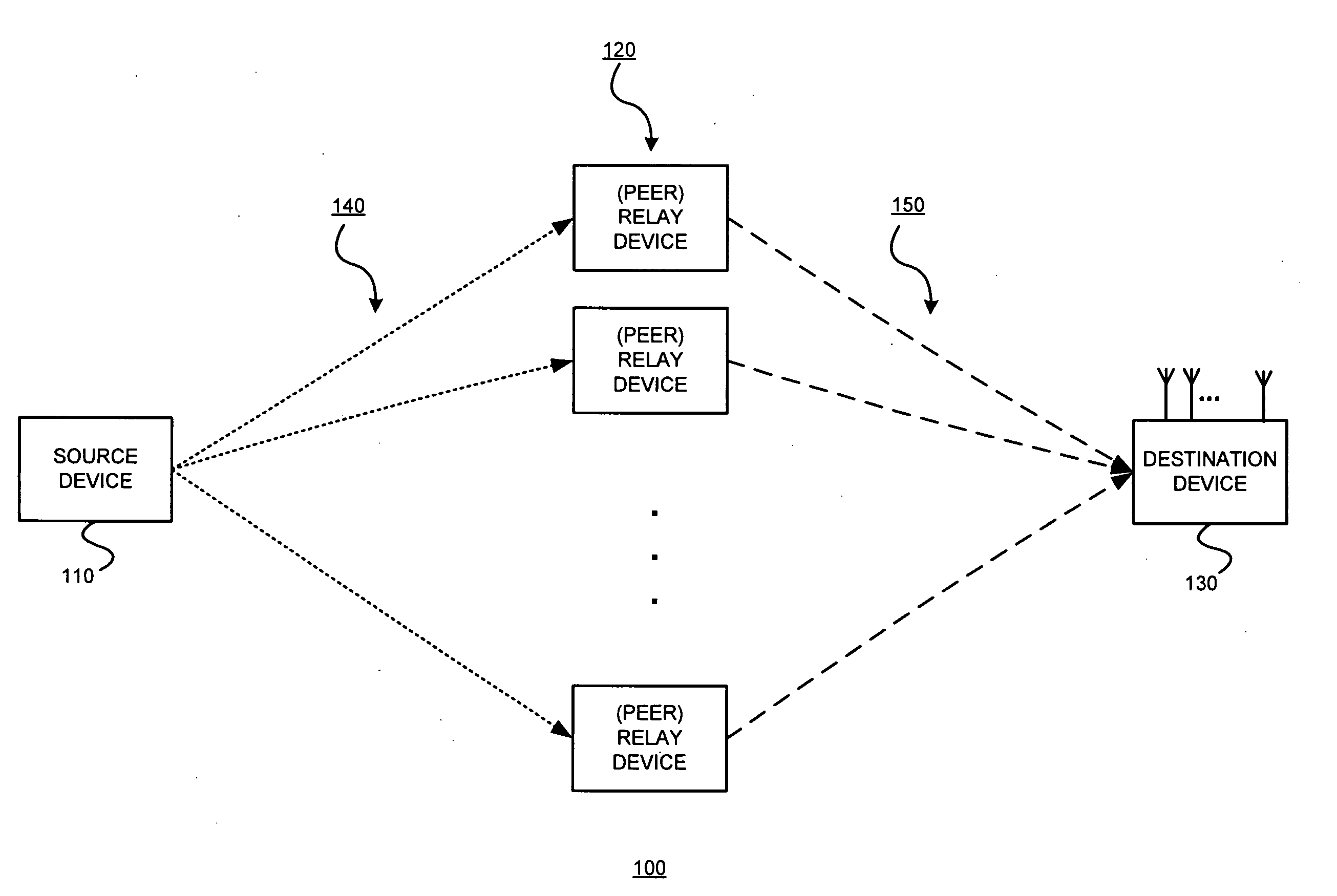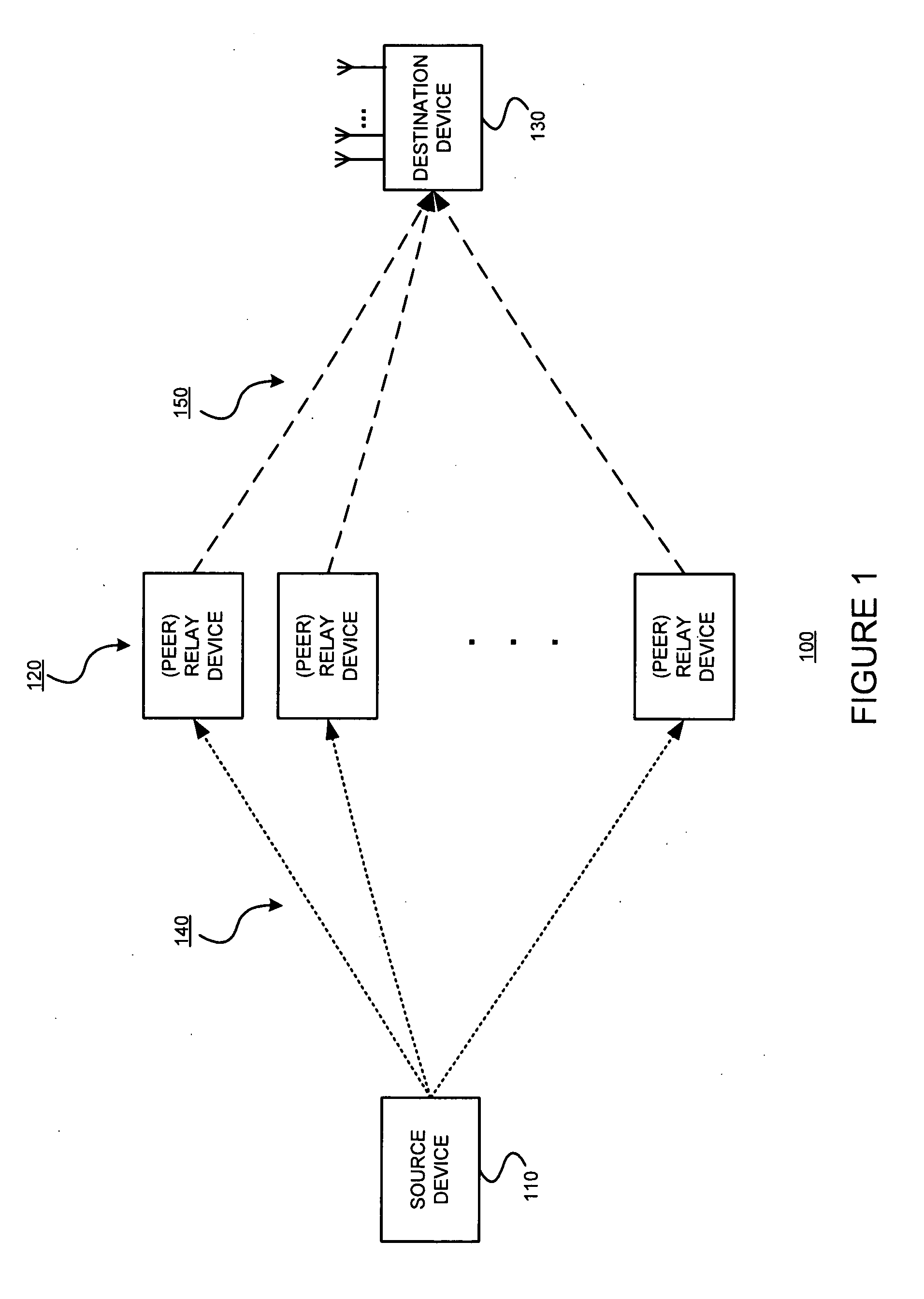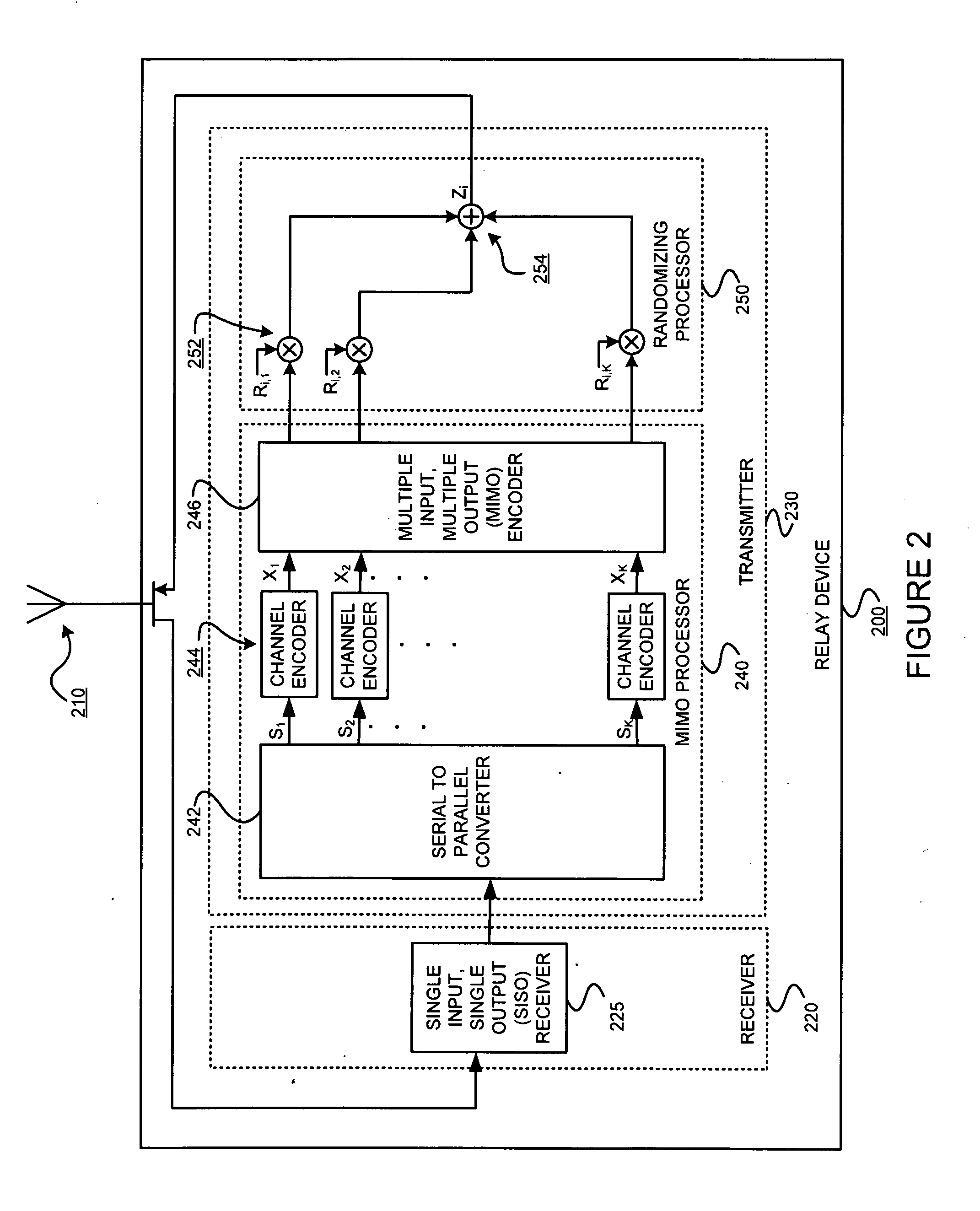Spatial multiplexing gain for a distributed cooperative communications system using randomized coding
a distributed cooperative communication and spatial multiplexing technology, applied in the field of wireless communication, can solve the problems of limiting the number of antennas integrated on portable devices, limiting the possible gains of existing mimo systems, and distributing the foregoing information could become impractical, so as to loosen the requirements of synchronization and network topology. , the effect of high spatial multiplexing gain
- Summary
- Abstract
- Description
- Claims
- Application Information
AI Technical Summary
Benefits of technology
Problems solved by technology
Method used
Image
Examples
Embodiment Construction
[0026]In a traditional MIMO system, each antenna can transmit an independent information stream to provide multiplexing gain (See, e.g., L. Zheng and D. N. C. Tse, “Diversity and Multiplexing: A Fundamental Tradeoff In Multiple-Antenna Channels,”IEEE Trans. on Info. Theory, Vol. 49, No. 5, pp. 1073-1096 (October 2003) (incorporated herein by reference).), as done in BLAST. In BLAST, at least as many receive antennas as transmit antennas, as well as a rich scattering environment, are needed to be able to distinguish the information streams.
[0027]Embodiments consistent with the present invention apply randomization to mimic BLAST in a distributed system, and exploit the spatial multiplexing gain provided by the relay devices. This is done in a distributed way and can obtain much higher throughput than the single relay cooperative transmission scheme.
[0028]This randomized cooperation scheme may be useful in an environment in which a group of relay devices are close to the source device...
PUM
 Login to View More
Login to View More Abstract
Description
Claims
Application Information
 Login to View More
Login to View More - R&D
- Intellectual Property
- Life Sciences
- Materials
- Tech Scout
- Unparalleled Data Quality
- Higher Quality Content
- 60% Fewer Hallucinations
Browse by: Latest US Patents, China's latest patents, Technical Efficacy Thesaurus, Application Domain, Technology Topic, Popular Technical Reports.
© 2025 PatSnap. All rights reserved.Legal|Privacy policy|Modern Slavery Act Transparency Statement|Sitemap|About US| Contact US: help@patsnap.com



